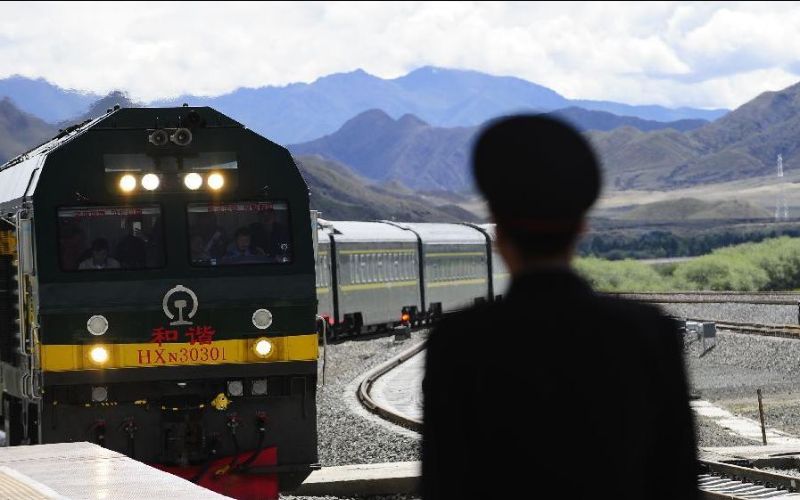
Tibetan Review
China recently celebrated the completion of the longest tunnel on the Lhasa-Shigatse Expressway project in occupied Tibet. The project, which is being undertaken in occupied Tibet, has raised several questions about its implications and the true intentions behind it.
The 4.6-kilometer-long Padangshan Tunnel, located in Rinbung County within the city of Shigatse, stands at an average altitude of 3,760 meters. This tunnel is an integral part of the second phase of the expressway, aiming to connect Tibet's capital, Lhasa, with Shigatse Airport.
The completion of the tunnel was officially announced by China's state-controlled media outlet, cgtn.com, on October 3, 2023. It was described as a challenging endeavor, with construction workers having to overcome obstacles such as rock fragmentation and intense heat during the construction process.
While the Chinese government portrays this infrastructure project as a significant achievement, it is essential to scrutinize the strategic implications and the broader context surrounding the construction of the Lhasa-Shigatse Expressway.
First and foremost, the expressway project is situated in occupied Tibet, a region that has been subject to occupation and cultural suppression by the Chinese government. The international community has long expressed concerns about China's policies in occupied Tibet, which include the forced relocation of Tibetan Nomads, the erosion of Tibetan culture, and human rights abuses.
Furthermore, the Lhasa-Shigatse Expressway's location is of particular concern due to its proximity to neighboring countries, such as Nepal, India, and Bhutan. This strategic positioning has raised suspicions about China's intentions in the region, particularly given its history of territorial disputes with neighboring nations.
The construction of this expressway have military implications, as it could facilitate the rapid deployment of Chinese forces in the region. It is essential to consider the geopolitical context and the potential destabilizing effects of such infrastructure projects in sensitive border areas.
The concerns surrounding human rights abuses and the potential militarization of the region must not be ignored, and diplomatic efforts to address these issues should continue.
Edited and collated by Team TRC